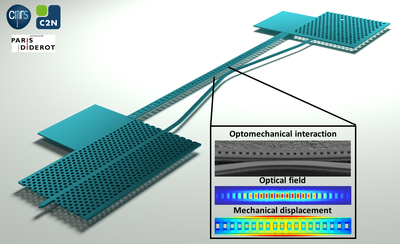Involved people : Rémy BRAIVE
Temperature is probably the most important physical variable of state, influencing almost every physical, chemical, and biological process. Surprisingly, the world’s most accurate temperature sensors, standard platinum resistance thermometers (SPRTs), rely on antiquated technologies that do not lend themselves to miniaturization, portability, or wide dissemination. Moreover, SPRTs are sensitive to mechanical shock, thermal stress and environmental variables such as humidity and chemical contaminants that cause irreproducibility and drifts. These fundamental limitations have stimulated the quest for improved temperature sensors.
Despite their high accuracy, primary thermometers e.g. acoustic gas thermometers, dielectric gas thermometers, Johnson noise thermometers, doppler broadening thermometers) are complex and fragile thus inappropriate for dissemination purposes, whereas optomechanical devices provide a small, reliable and cost-effective primary temperature sensing method. Such sensors use zero-point motion vacuum noise as a quantised standard to scale thermal noise, and recent improvements enable to assess the feasibility of this method at room temperature using miniaturised devices.
The measurement of thermodynamic temperature has been pushed to its ultimate performance for the determination of the Boltzmann constant and the forthcoming redefinition of the kelvin. The optomechanical sensors developed in this project will probe quantum entanglement between mechanical and optical oscillators states due to light pressure back-action on mechanical resonator.
Collaborators

Figure 1: Suspended one dimensional photonic crystal with an access waveguide on the side. Optomechanical interaction between the optical and mechanical modes (shown in the inset) takes place at the center of the photonic cystal cavity.
Publications:
Photonic and optomechanical thermometry
T. Briant et al,
Optics 2022, 3(2), 159-176
High-finesse Fabry–Perot cavities with bidimensional Si3N4 photonic-crystal slabs
X. Chen, C. Chardin, K. Makles, C. Caër, S. Chua, R. Braive, I. Robert-Philip, T. Briant, P.-F. Cohadon, A. Heidmann, T. Jacqmin & S. Deléglise
Light: Science & Applications 6, 16190 (2017)